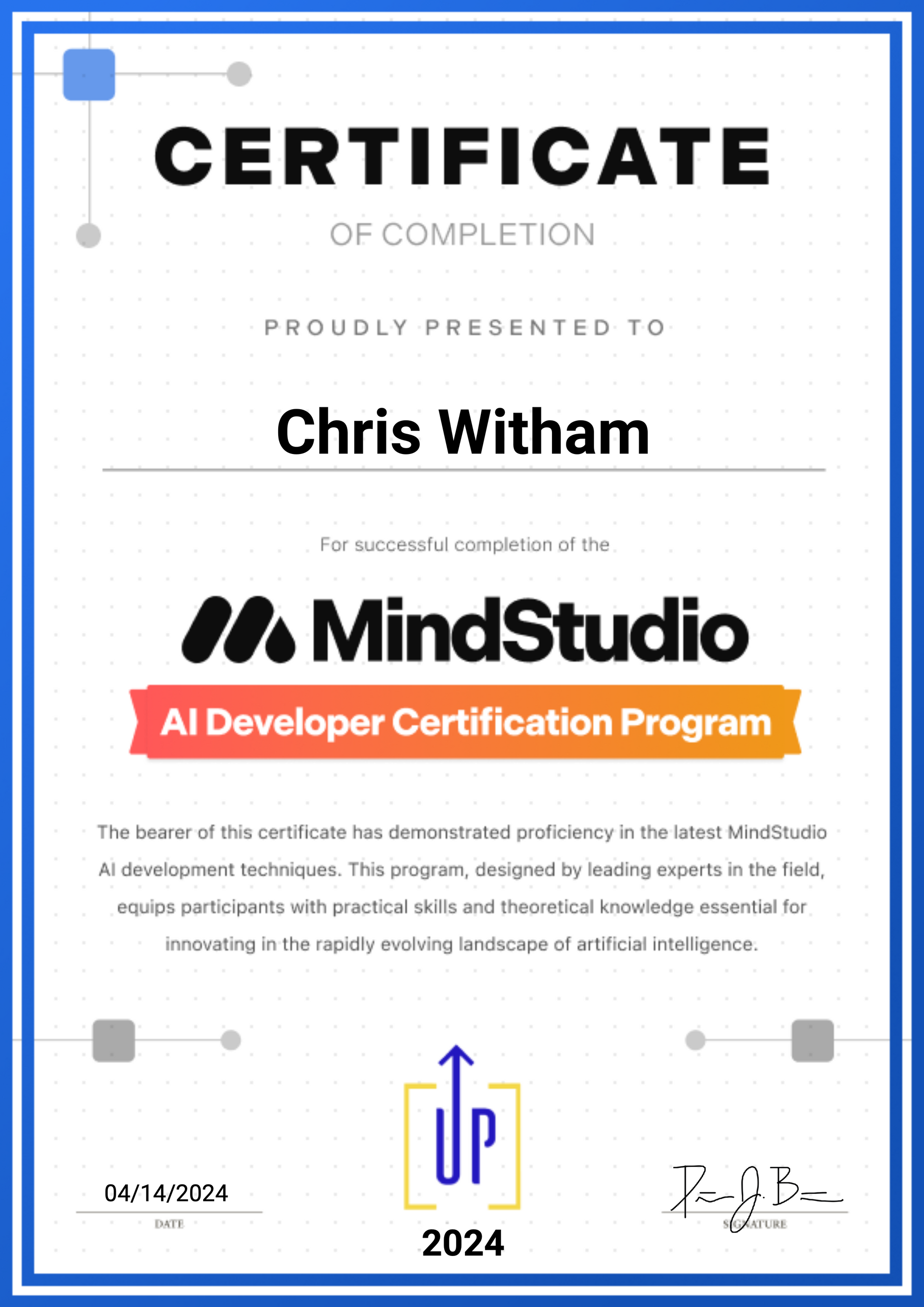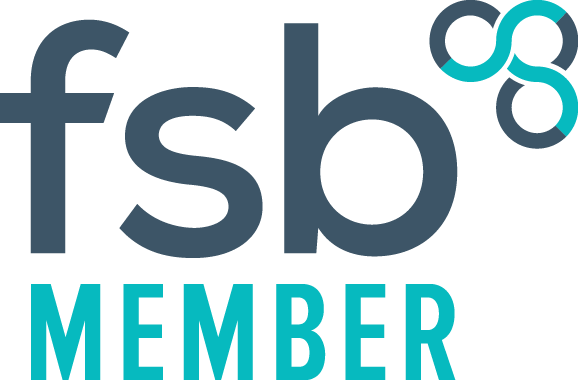Have questions? Contact Chris today for a chat about how we can help you
AI for Breakfast
Post 65 - AI generated code, pretty damn good…
Whilst working on the E-Mail settings section of my HubSpot account I wanted to build a custom signature on the outbound e-mails that matches the one on my Apple Mail account.
HubSpot requires you to enter HTML if you want something a bit advanced which I did. I’m OK with HTML and CSS but certainly not at developer level so I thought I’d turn to ChatGPT as I've been hearing about it's Vision functionality but never tried it.
So I took a screen shot of my e-mail signature and uploaded it to ChatGPT with the prompt:
This is a screen grab of my email signature from Apple Mail. I need to recreate it in HTML for a HubSpot email signature. Please could you write the HTML for me?
Within seconds it had written the code and all I had to do was copy and paste into my Bear App, add in a few links and then paste into the HubSpot code box.
Turns out HubSpot doesn't allow the -style- tag so I went back to ChatGPT with another prompt:
It seems HubSpot won't allow the -style- tag, could you use another class to contain the CSS?
Again, seconds later I have my revised code, edited the links and pasted it into HubSpot, job done and looking pretty good!
This is amazing when you think about it, from an image it worked out exactly what I needed and created actual code within minutes, something that would have taken me quite some time to do manually!
So with that in mind I thought I’d give
Typeface.ai another spin and got it to write me a blog post about AI and coding, this highlighted a slight sticking point with Typeface, you can't refer back to the prompt you used to create your content as far as I could see. Anyway it came back with the following article which is pretty reasonable IMHO.
Transforming Coding with AI: Harnessing the Power of ChatGPT
Picture this: You're sitting in front of a glaring screen, fingers poised above the keyboard, trying to unravel the intricate labyrinth of code. But with each passing moment, you find your patience waning and frustration brewing. Sounds familiar? You're not alone. Coding can pose daunting challenges, but it's the dawn of a new era - an era marked by groundbreaking strides in artificial intelligence (AI). This isn't just a tale of how AI is revolutionizing the tech industry. It's about how one AI model named ChatGPT is transforming the coding landscape.
The Evolution of AI in Coding
AI and coding have had a symbiotic relationship right from the get-go. While coding gave birth to AI, AI has been diligently returning the favor by simplifying coding complexities. The advent of AI-powered tools that autocorrect code, suggest improvements, and even generate code has unleashed waves of efficiency and accuracy.
Enter ChatGPT, an AI model developed by OpenAI that has been drawing attention in the coding community. Distinctive with its unique linguistic capabilities, ChatGPT has always been known for its ability to carry out human-like text conversations. But the beauty of ChatGPT extends beyond just chatbots or personal assistants—it's proving to be an unrivaled ally in code writing.
ChatGPT: An Unparalleled Ally in Code Writing
Fueled by a technique called GPT-3 (Generative Pretrained Transformer 3), ChatGPT is capable of tasks you'd typically associate with a human coder. It can generate code, help debug, and even explain coding concepts. It learns from an extensive corpus of internet text and uses this knowledge to generate relevant text (in this case, code) based on the input it's given.
Perspectives on AI in Code Writing
From students seeking homework help to professionals aiming to optimize their code, ChatGPT caters to a broad user base. The power of AI code writing can be notably influential in the realm of small businesses, where resources might be stretched thin. Smaller teams can leverage this technology to automate routine coding tasks, freeing up valuable time for strategic thinking and creativity.
However, three standout aspects of using AI in code writing are precision, efficiency, and scalability. Machine learning models like ChatGPT can analyze vast amounts of data quickly, learning and improving upon itself with each exercise. This ability is a boon, especially in the case of AI-generated code that is less prone to human error.
Inspiring Examples of ChatGPT Application
What does using ChatGPT for code writing actually look like in action? Consider an instance where a programmer is struggling with an unfamiliar coding language. Rather than comb through numerous tutorials and examples, they could present their issue to ChatGPT, getting a step-by-step guide tailored to their specific problem.
Or, in a forward-looking application of ChatGPT, a small business owner with a non-technical background could generate code snippets for their website without recruiting a specialist, saving both time and money.
Looking Ahead: Embracing AI in Your Coding Journey
AI, particularly models like ChatGPT, is more than a futuristic buzzword; it's fast becoming an indispensable tool in the programmer's toolkit. Embracing AI in your coding journey doesn't mean you're surrendering your craft to machines. Instead, it's about harnessing the power of AI to augment your skills, refine your output, accelerate your pace, and explore untapped possibilities.
The convergence of AI and coding promises a fascinating future that changes our perception of traditional coding. While ChatGPT isn't a silver bullet for all coding hurdles yet, it certainly is a giant leap forward. As we marvel today at the capability of AI models in assisting with code writing, we may very well find ourselves wondering tomorrow - what's next in this AI-led coding revolution?
LucidSynergy Ltd.,
7 Forbes Business Centre
Kempson Way
Bury St Edmunds
Suffolk
IP32 7AR
Occasional Newsletters
We will get back to you as soon as possible
Please try again later
© 2025 LucidSynergy Ltd. Registered in England and Wales No.7080913.








